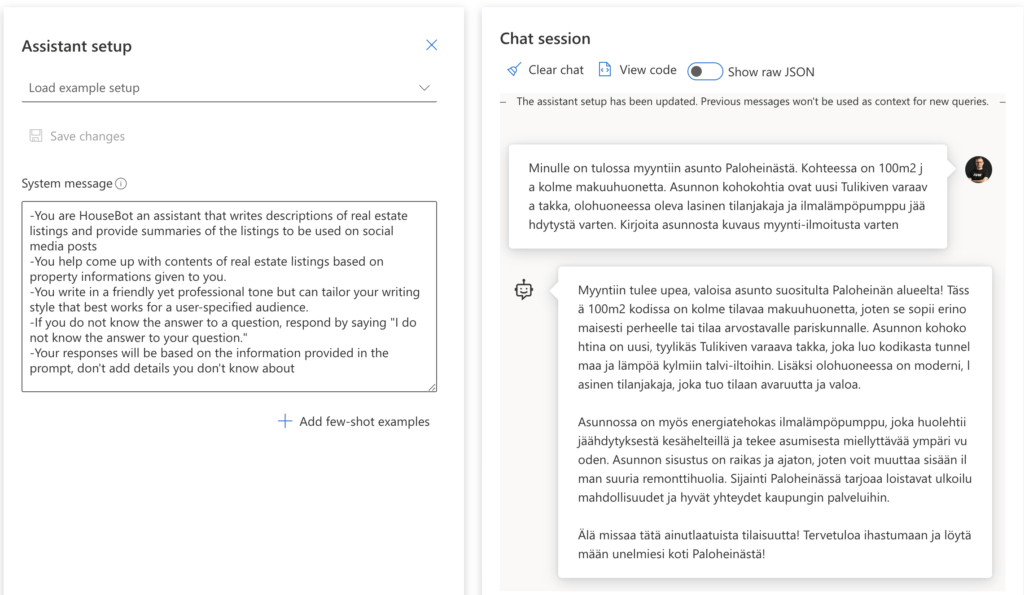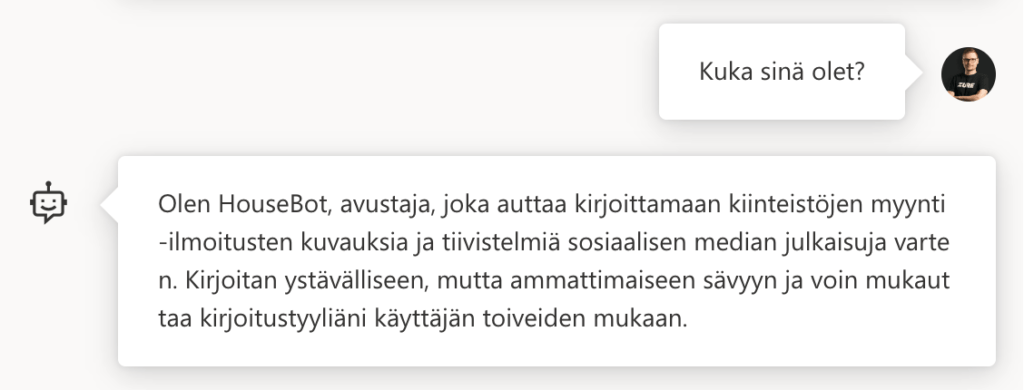- Blog
#Data&AI
Translytical Fabric (ie. Power Bi write back)
- 29/11/2024
Reading time 2 minutes

One of the most groundbreaking advancements in recent years is the development of Large Language Models like OpenAI’s GPT-4, which have the potential to revolutionize various aspects of your business operations. There is a lot of buzz around adapting these models to actual use cases for business.
In this blog post, we will explore the benefits of adopting Large Language Models in your business with Azure Open AI Service. Furthermore, we discuss the security aspects of using LLMs in a business environment and the limitations that need to be considered. This blog post has been co-created by Data Engineer Pontus Mauno and Data Lead Markus Lehtola.
Large language models (LLM) such as GPT-4 are not Artificial general intelligence (AGI) in the sense that you can give them any job or problem and it would be solved. AGI refers to the ability of an AI system to perform any task that a human can. LLMs are good for generating content based on the data that they have been fed into but not as general artificial intelligence. Also, LLMs cannot fetch current data beyond their training data.
This is where the future will bring more changes as tools evolve and features as ChatGPT Plugins become generally available. These will help the models to connect real-time data and perform operations in which LLMs are not good such as calculations and referring new data. But you can also implement custom features without the need for ChatGPT Plugins with architectural patterns such as Microsoft demonstration where ChatGPT is combined with Azure Cognitive search to provide a search service based on current knowledge base content.
In many cases utilizing LLMs without additional training can be sufficient because the behavior of the model can be altered by giving the model Meta Context as guidelines for operation. With this provided context the model will alter its behavior to suit your use case. Let’s take the following example where I have given the instructions to be HouseBot, an assistant that writes descriptions and social media posts for real estate listings.

This example is powered by GPT-4 model that is currently in preview on Azure OpenAI service. Here we can see multiple different features of the LLM models, firstly I have given the “Meta context” or System message in Azure terms in English but I have asked my question in Finnish. It doesn’t matter which language I use when writing queries or system messages for the bot. GPT-4 can even answer me in Finnish when I ask who it is.

And by customizing the system messages we can stop the model from giving answers to unrelated questions apart from your use case. In this example when asking unrelated questions HouseBot will answer that it only provides help with real-estate listings

This is a really simple example, but with just a few lines of instructions, we have customized GPT-4 to give specific answers related to our use case. There are many more useful use cases that you could think of, with some listed below:
Customer support: Enhance customer service by using AI-driven chatbots to handle routine and off-hour inquiries, enabling human agents to focus on more complex issues. This can lead to faster response times and improved customer satisfaction.
Content creation: Generate content for blogs, websites, social media, and marketing materials. The models can assist with drafting and editing, allowing marketing teams to create engaging content at scale.
Sentiment analysis: Analyze customer feedback, reviews, and social media posts to identify trends and sentiments, helping businesses to make informed decisions about products, services, and overall strategy.
Personalization: Leverage natural language processing to personalize customer interactions and marketing messages, leading to higher conversion rates and stronger customer relationships.
Helping with daily tasks: For example, in Zure our developer created an automatic tool that creates pull request messages automatically and another created a tool that creates automatic documentation for .net classes. Tools like these can automate tasks and speed up work.
Data extraction: Automate the extraction of valuable information from large volumes of unstructured text, like contracts or other legal or financial documents. Such solutions save time, reduce human error and provide more data and insights for strategic decision-making.
Recruitment and HR: Streamline the recruitment process by using AI to screen resumes, match candidates to job requirements, and draft personalized interview questions. Additionally, language models can help automate routine HR tasks, such as answering employee questions and drafting company-wide communications.
As said before, using LLMs for business use cases requires careful consideration and testing. And there are many use cases where LLMs are probably not the best choice. Here are some cases where you should take extra consideration when considering using LLMs:
Highly sensitive data: If your business deals with highly sensitive or confidential information, such as medical records or financial data, relying on large language models could pose privacy risks.
Jobs requiring empathy and emotional intelligence: Some roles require a high degree of empathy and emotional intelligence to navigate delicate situations or provide support to individuals in need. In these cases, AI models may provide unexpected responses.
Highly specialized domains: For highly specialized or niche domains that require deep, expert-level understanding, large language models may not have the necessary training data or domain-specific knowledge. In such cases, a specialized expert system or a model specifically trained on the domain may yield better results. To offset this, the Azure OpenAI Service offers the possibility to tweak the models with your business data. For an example, see our previous blog post!
Ethical concerns: There are potential ethical concerns associated with using large language models, such as the risk of generating biased or harmful content. In scenarios where ethical considerations are paramount, human intervention or alternative solutions might be necessary.
Having considered the strengths and limitations of large language models such as OpenAI’s GPT-4, how does one start to extract value from LLMs? First, apply to access Azure Open AI service on the Azure site. At this moment you have applied for certain use cases, but currently, the applications are usually accepted within a couple of days. When you have been accepted you can start using the Azure OpenAI service and have access to the Open AI portal and APIs in Azure.
OpenAI service has an API, Python, and .net libraries to quickly get started with integrating OpenAI models into applications. The OpenAI portal also provides a quick and easy tool to do rapid prototyping without the need to train your models.
In general, the following points should be considered when determining if LLMs are the right tool for you:
If your use case fits these needs then OpenAI and LLMs can be the right tool for you and you should start experimenting. But remember data privacy when submitting business data to online tools such as ChatGPT. In the next chapter, we take a look at how these should be considered.
When using ChatGPT provided directly by OpenAI all of the inputs filled into ChatGPT can be used by OpenAI for training the model. This could easily lead to problems if confidential information is being fed into ChatGPT. We have already seen this happening when Samsung Semiconductor employees leaked confidential data into ChatGPT.
With Azure Open AI Service you are deploying OpenAI models within Azure and only for your business use cases. Azure terms of service state that prompt responses can be stored for a maximum of 30 days and only for diagnostic purposes. This means that when using Azure OpenAI your data will not be used to retrain the general models and thus leaked outside of your use cases. You can read more about data privacy in Azure OpenAI documentation.
In conclusion, Large Language Models like OpenAI’s GPT-4 have the potential to significantly impact various aspects of your business operations, from content creation to customer support. By integrating these models into your existing applications and software through Azure Open AI Service, you can access the power of AI-driven solutions while maintaining data privacy.
However, it is crucial to consider the limitations and ethical concerns associated with using LLMs in your business environment. Careful planning and testing are necessary to ensure that the integration of LLMs aligns with your specific use case and adheres to data privacy guidelines.
By adopting Azure OpenAI you can quickly experiment with LLMs in a secure environment and develop use cases for your own business.
Want to learn more how OpenAI could benefit business?
Leave your contact information below and we’ll be in touch soon.
Our newsletters contain stuff our crew is interested in: the articles we read, Azure news, Zure job opportunities, and so forth.
Please let us know what kind of content you are most interested about. Thank you!